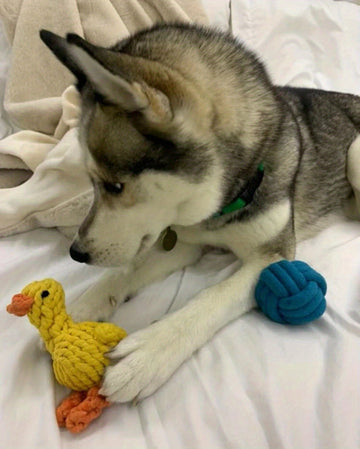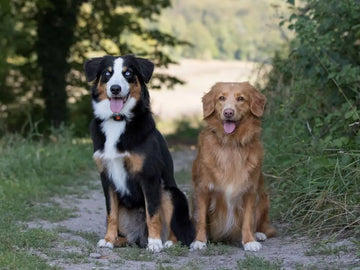As a responsible pet owner, you’ve likely taken steps to ensure your dog is well-fed, exercised, and cared for. But when was the last time you checked their teeth? Just like humans, dogs need proper dental care to prevent common issues like plaque buildup, gum disease, and even tooth loss. Many pet owners are unaware that dental problems can lead to serious health complications, such as heart disease and kidney problems, if left untreated.
The good news is that many dental issues in dogs are preventable with the right care. However, identifying when your dog needs a teeth cleaning is key to preventing these problems from escalating. Early detection and intervention can save your dog from unnecessary pain and expensive treatments down the road.
In this article, we’ll go over the common signs that indicate your dog may need a professional teeth cleaning. By being aware of these signs, you can take action before their dental problems affect their overall health. Let’s dive in!
Does Your Dog Have Bad Breath? (Halitosis)
Bad breath is often one of the first signs that your dog may need dental care. While it’s normal for dogs to have a mild “doggy” odor, especially after meals, persistent foul breath can indicate underlying oral health problems. The most common cause is the buildup of plaque and tartar on your dog’s teeth, which fosters bacterial growth in the mouth. This bacteria is the primary source of the unpleasant smell.
If your dog’s breath has become unusually strong or foul, it’s a clear signal to check their oral health. Regular brushing and professional cleanings are key to preventing bad breath and maintaining a healthy mouth. Additionally, incorporating dental chews and specialized dog toothpaste into your routine can help control odor and promote better oral hygiene daily.
Are Your Dog’s Teeth Yellow or Brown?
Take a close look at your dog’s teeth. Do they appear yellow or brown near the gumline? This discoloration is often the result of plaque buildup that has hardened into tartar. Plaque is soft and can be brushed away, but tartar is much harder and can only be removed by a professional cleaning at the vet’s office.
Discolored teeth not only affect the appearance of your dog’s smile but also signal that bacteria are present in your dog’s mouth. This can eventually lead to gum disease, tooth decay, or even tooth loss. If you spot yellow or brown staining on your dog’s teeth, it’s time for a dental checkup.
Is Your Dog Drooling Excessively?
Excessive drooling in dogs can be a sign of oral discomfort. While some dogs drool more than others, if your dog is suddenly drooling more than usual, it could be because they are experiencing dental pain. Drooling occurs as a natural response to discomfort, such as sore gums or loose teeth. This could also be a sign of gum disease, an abscessed tooth, or even an infection in the mouth.
If your dog seems to be drooling excessively, especially when eating or chewing, it's important to get their mouth checked for underlying issues. In some cases, professional cleaning is required to address the cause of the drooling.
Is Your Dog Having Difficulty Eating or Chewing?
Has your dog been having trouble eating or chewing their food? This could be a sign that they are experiencing pain in their mouth. Dogs with dental problems often avoid dry food or chew on one side of their mouth to avoid pain. Some dogs may also drop food from their mouths or appear hesitant to eat. These behaviors can be indicative of issues like broken teeth, gum disease, or even tooth decay.
If your dog seems reluctant to eat or has trouble chewing, it’s essential to have their teeth examined. A professional cleaning, along with possible dental treatment, can help alleviate the pain and restore their ability to eat comfortably.
Are Your Dog’s Gums Swollen or Bleeding?
Healthy gums should be pink, firm, and free from swelling or redness. If you notice that your dog’s gums are swollen, bleeding, or appear red and inflamed, it’s a sign that they may have gingivitis, the early stage of gum disease. Gingivitis is caused by the buildup of plaque and bacteria along the gumline, and if untreated, it can progress to periodontitis, which affects the deeper structures of the teeth and gums.
Regular brushing and professional cleanings can help prevent gum disease, but if your dog’s gums are already showing signs of swelling or bleeding, it’s important to schedule a dental exam to prevent further complications.
Is Your Dog Pawing at Their Mouth or Face?
If your dog starts pawing at their mouth or face frequently, it’s a sign they may be in pain. Dogs will often rub their face or paw at their mouth to try to alleviate discomfort caused by dental issues. This could be due to sore gums, a tooth abscess, or other oral health problems that are causing them discomfort.
If your dog is consistently pawing at their face or mouth, it’s important to investigate further. Check for signs of swelling or redness around the mouth, and consider making an appointment with the vet for a thorough dental exam.
Does Your Dog Have Loose or Missing Teeth?
Loose or missing teeth are clear signs that your dog may have advanced dental problems, such as periodontal disease. Gum disease weakens the structures that hold your dog’s teeth in place, and if left untreated, it can lead to tooth loss. Tooth loss in dogs is not only painful but can also affect their ability to eat properly.
If you notice that your dog has a loose tooth or has already lost a tooth, you should seek veterinary care immediately. A professional dental cleaning, along with additional treatments, may be necessary to address the underlying issue.
Has Your Dog Had Changes in Behavior or Mood?
Pain from dental issues can lead to changes in your dog’s behavior. If your dog, who is usually playful, suddenly becomes lethargic, irritable, or withdrawn, it could be a sign of dental discomfort. Oral pain can affect your dog’s overall mood and energy levels, making them less eager to engage in their usual activities.
Keep an eye out for any unusual behavior changes in your dog. If they are suddenly more sensitive, less active, or refuse to play, it could be due to dental pain. Addressing the problem early can help restore their energy and enthusiasm.
Does Your Dog Have Tartar or Plaque Build-Up?
If you notice visible tartar or plaque on your dog’s teeth, it’s a clear sign that your dog’s dental hygiene is lacking. Plaque starts as a soft, sticky film that accumulates on the teeth and can be removed with regular brushing. However, if plaque is not removed, it hardens into tartar, which is more difficult to remove and requires professional cleaning.
Look for tartar buildup near the gumline, especially on the back teeth. If you spot tartar, it’s time to schedule a dental cleaning with your veterinarian to remove the hardened plaque and prevent further dental issues.
Conclusion
Good dental hygiene is an essential part of keeping your dog healthy. Recognizing the signs that your dog needs a teeth cleaning is the first step in preventing painful oral health issues. Whether it’s bad breath, yellowing teeth, or difficulty eating, don’t ignore the symptoms that suggest your dog’s teeth need attention.
Regular brushing, along with the use of dental chew toys for dogs like cotton rope dog toys or dumbbell rope dog chew toys, can help reduce plaque and tartar buildup and keep your dog’s teeth in top shape. However, if you notice any of the signs mentioned in this article, it’s important to consult with your veterinarian for a professional cleaning.
By staying on top of your dog’s dental health, you can ensure they lead a happy, healthy life with a beautiful smile!
FAQ
1. How often should I clean my dog’s teeth?
It’s recommended to brush your dog’s teeth at least 2-3 times a week. However, professional dental cleanings should be done annually or as advised by your vet, especially if you notice signs of dental issues.
2. Can dental chews help with plaque buildup?
Yes, dental chews can help reduce plaque buildup and keep your dog’s teeth clean between brushings. Look for chews specifically designed for dental health, such as rubber toys or treats that help scrape away plaque.
3. Are there any natural ways to clean my dog’s teeth?
Some natural ways to maintain your dog’s oral health include offering dental chews, like cotton rope dog toys, and incorporating raw bones into their diet. However, these methods should complement regular brushing and professional cleanings, not replace them.
4. Can gum disease be reversed in dogs?
In the early stages, gum disease (gingivitis) can be reversed with professional cleaning and improved at-home dental care. However, advanced gum disease (periodontitis) may require more extensive treatment and cannot always be fully reversed.
5. My dog’s breath smells bad. Should I be concerned?
Yes, bad breath in dogs, especially if it’s persistent, is often a sign of oral health problems like plaque buildup or gum disease. It’s best to have your dog’s teeth checked by a vet to address the issue early.










